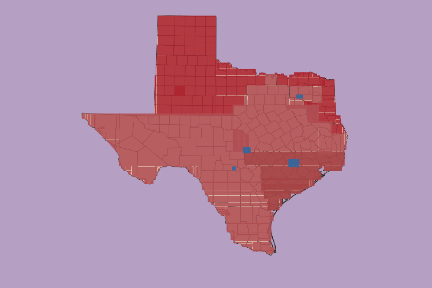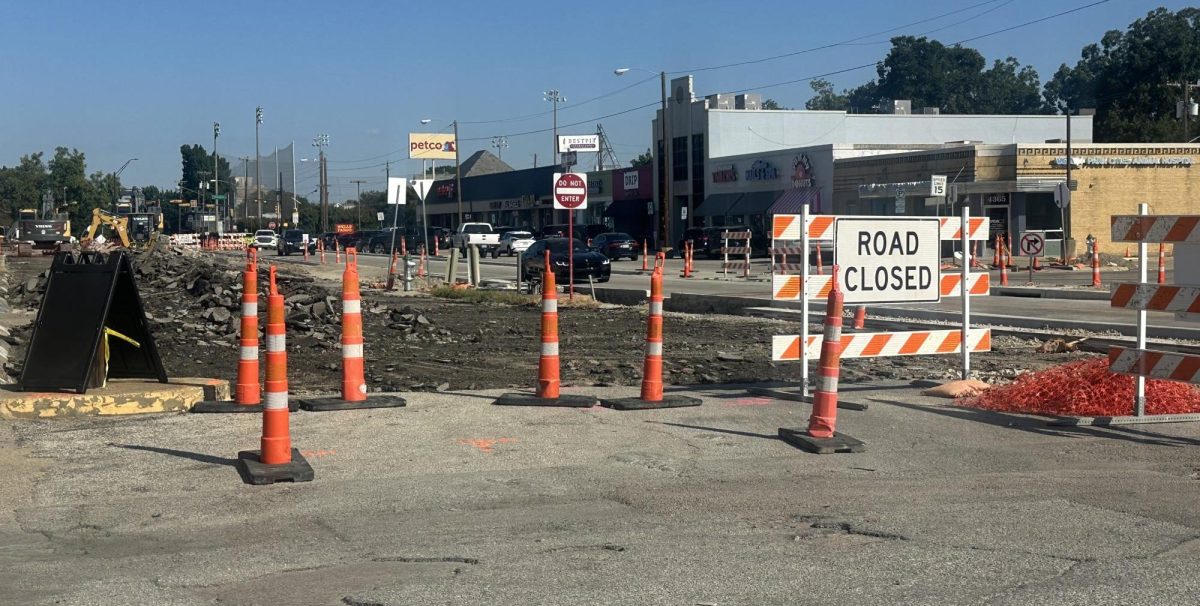Divided by lines, the Texas district map represents a jigsaw puzzle. There are 38 districts where each district is represented by the political majority, Democratic or Republican.
“The constitution gives state legislatures the right to draw congressional district lines,” Southern Methodist University political science professor, Matthew Wilson said. “It is their power where one party controls both houses in the state legislature and the governorship.”
Every 10 years there’s a census to measure the population, and from there, create a district that represents the majority’s political standing. However, there are exceptions where inbetween the 10 years, a state can choose to redraw the district borders.
“It’s not unheard of. States have done that from time to time,” Wilson said, “there’s nothing constitutionally that says you can only redistrict once every decade.”
These redistricted lines ensure that the state represents the population accurately; however, often when states redraw the lines, the district map is inadequate in representing the majority. People who oppose the redrawing of districts label it as a deception tactic called “gerrymandering.”
“There’s partisan gerrymandering, and in that instance, gerrymandering is manipulating the district lines to benefit or harm particular voters on the basis of party,” legal counsel for voting rights and redistricting at Campaign Legal Center, Ben Phillips, said, “there’s also racial gerrymandering, where the lines are drawn on the basis of race.”
While there is no current law that prevents partisan gerrymandering, there are multiple laws that prevent racial gerrymandering, such as the Voting Rights Act of 1965 and the 14th Amendment. The debate now in Texas is if the 2025 redrawn map of Texas is an issue of gerrymandering or an accurate representation.
“Republicans in Texas just redrew congressional districts and their argument was that in the 2024 presidential election, Hispanic voters moved away from the Democrats toward the Republicans,” Southern Methodist University political science professor Cal Jillson said, “and they need to reflect that new republic of Hispanic support.”
What makes this situation distinctive is the unofficial role President Donald Trump has played. When President Trump called Texas Governor Greg Abbott, the President requested more Republican chairs by redistricting.
“It’s unusual for a president to get that directly involved; President Trump didn’t get involved in the details of drawing the district lines,” Wilson said. “But certainly he provided a lot of the impetus for doing it in the first place because he faces a difficult midterm environment, and he wanted to strengthen Republicans’ hand.”
These new seats would allow for President Trump to secure more Texan Republican support in Congress. The predicted outcome is to flip 3 to 5 Democratic seats to Republican seats.
“Republicans will gain anywhere from 3 to 5 seats, 3 is pretty much a slam dunk. That includes that the district where we currently are, the 32nd district of Texas, will switch to being a Republican district,” Wilson said. “The two that are somewhat up in the air are the two South Texas districts. They are going to become a little bit more Republican, but it’s possible they could still hold onto their seats.”
Governor Abbott has signed off on the new map, but Democrats and multiple civil rights groups have filed lawsuits against the new map. These groups argue that this new map will create harmful divides that undermine minority voters and deepen the political divide between Democrats and Republicans.
“It’s pretty outrageous for Governor Abbott to say ‘now I’ve looked at the racial composition of these districts, and based on what on the racial composition I’ve found, now the districts have to be redrawn to eliminate those districts’,” Phillips said. “That’s just racial discrimination that violates the Voting Rights Act and the 14th Amendment.”
The injunction hearing will take place on October 1st. Additionally, other states have begun to partake in the redrawing of district lines, such as California. In November, there will be a vote in California, deciding if the state should go through the redistricting process.
“If California approves their measure, it’s a democratic gerrymander that will essentially cancel out the gains that Republicans are likely to make in Texas,” Wilson said. “It doesn’t directly affect anything that happens in Texas, but it will definitely affect the national landscape.”
The state level changes will lead to national level changes in political representation. A solution to end the conflict over gerrymandering and redistricting is to pass laws that bans partisan gerrymandering.
“My hope is that this current round of these redistricting wars makes more people in Congress realize that it’s actually in everyone’s interest, specifically voters, to stop this,” Phillips said.
















